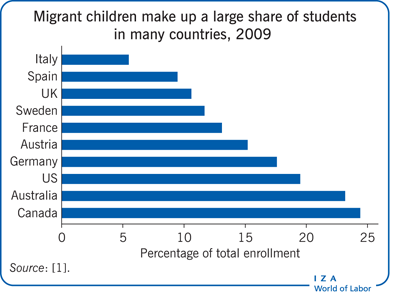Elevator pitch
As global migration flows increase, so do the number of migrant students in host country schools. Yet migrants’ achievement scores lag well behind those of their native-born schoolmates. Performance gaps are explained largely by differences in migrant parents’ socio-economic background, cultural capital, and language skills. Education policy needs to focus on language teaching, parental involvement, diversity training, and beneficial social interaction between immigrant and native-born populations. With the wealth of many industrialized countries threatened by a lack of qualified labor, education of immigrants should be an important priority.
Key findings
Pros
The academic performance of migrant children is higher in skill-based immigration systems.
The performance of migrant children benefits from preserving their cultural capital.
Improving language acquisition boosts migrant children’s educational achievement.
Having high-ability peers improves the educational performance of migrants.
Increasing the number of teachers with an immigrant background and helping immigrant parents engage with their children’s schools can narrow the educational achievement gap.
Cons
The higher performance of migrant students in countries with point-based systems comes at the expense of admitting fewer disadvantaged children of less skilled migrants.
The performance of migrants is impeded by the lower socio-economic status of their parents.
The achievement gap of migrant children widens when they immigrate at an older age.
Peer effects can widen the gap between migrant and native students in school systems with complete and early tracking based on performance.
